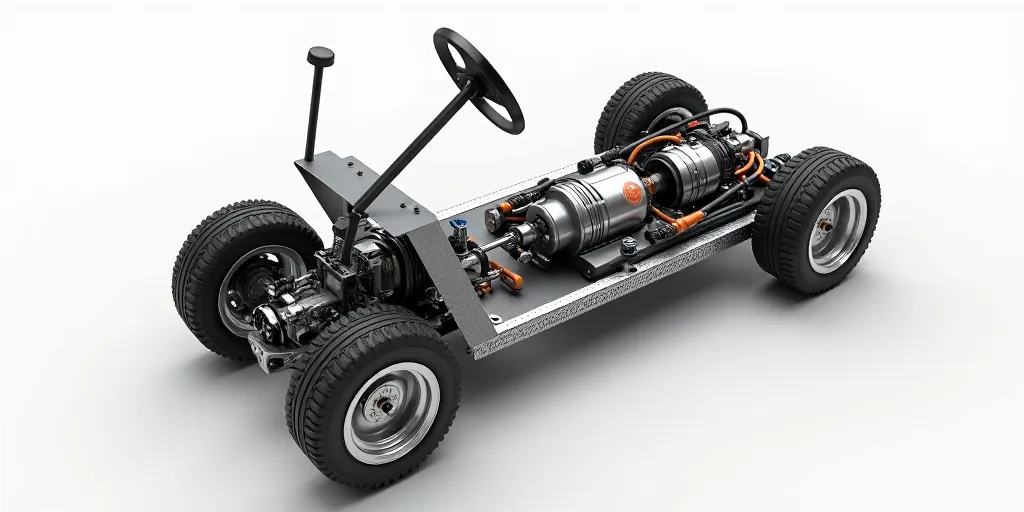-
Shopping Tools
-
Care & Maintenance
-
About
-
Dealer Login

A transaxle blends transmission, differential, and axle to turn motor power into smooth, quiet motion—boosting balance, traction, and efficiency on compact vehicles.
A golf cart transaxle is a single housing that combines gear reduction with a differential and axle shafts to deliver torque to the rear wheels. By integrating parts that would otherwise be separate, the unit converts high-speed, low-torque motor output into low-speed, high-torque wheel rotation, while keeping weight centralized for stable handling. Whether your cart is gas (with a CVT belt drive feeding the transaxle) or electric (with a fixed gear set), the architecture is similar—and it’s a big reason a golf cart can climb hills, crawl through turf, and cruise quietly without complex drivetrains.
Electric carts: The traction motor spins at relatively high RPM. Gas carts: The engine drives a primary clutch and belt (CVT), which varies ratio automatically with RPM and load, feeding the transaxle input shaft.
Inside the transaxle, the input shaft turns a ring-and-pinion gear set. This 90° turn (from longitudinal input to lateral axles) routes power into the differential. The ring-and-pinion ratio provides the first stage of torque multiplication.
Additional spur/helical gears (depending on model) further reduce speed while multiplying torque. Typical overall reductions are roughly 10:1–12:1 for many carts, enabling strong low-speed pull without overheating the motor or slipping the belt.
The differential (spider gears) splits power to the left and right axle shafts so wheels can rotate at different speeds in a turn. This prevents turf scuffing and binding. Some utility-oriented transaxles add limited-slip features for better traction on wet grass or gravel.
Optimized, sealed gear meshes and a compact gear path reduce energy losses compared with long driveshafts and separate gearboxes. Electric systems benefit from lower motor current for the same wheel torque; gas systems see steadier belt loading and less heat.
Combining reduction gears, differential, and axle in one housing saves space, lowers the center of mass, and frees chassis room for batteries, fuel tank, or storage. The short driveline also reduces vibration and noise.
Fewer castings, bearings, and couplers mean less mass. Lower unsprung and overall weight improves ride quality and helps protect turf, especially when crossing soft ground.
Minor issues—seeping seals, dark fluid, modest whine—often respond to a reseal and fresh oil. Persistent rumble, leaks with play at the axle, or metal flakes usually point to bearing and gear damage. Because many cart transaxles are modular, shops can rebuild with new bearings, seals, and selected gears; in high-hour units or when housings are worn, a complete replacement may be more economical.
The transaxle is the silent workhorse that multiplies torque, splits it between rear wheels, and keeps your cart controllable and quiet. Understand the power path, listen for early warning sounds, maintain clean, correct lubricant, and your drivetrain will deliver season after season—whether you’re cruising the course, hauling garden supplies, or navigating hilly property.
